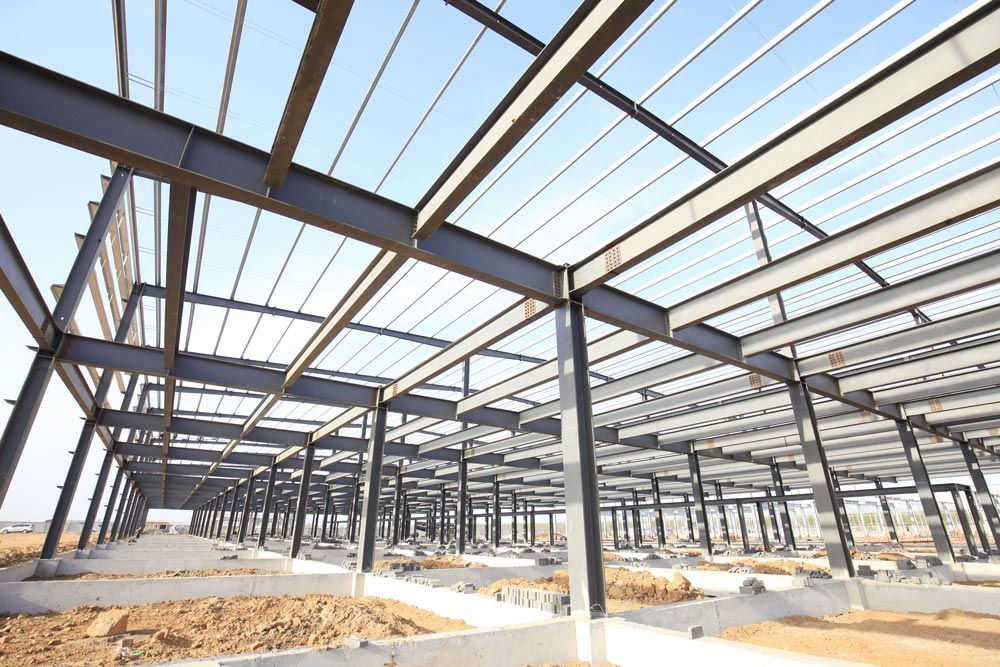Call Now For a Free Quote
07 5437 0817
Blog > What To Know About The Fabrication Of Structural Steel
What To Know About The Fabrication Of Structural Steel
When you look at a city skyline dotted with modern skyscrapers or pass by a home with a freshly installed steel gate, do you ever wonder how that steel came to be so precisely moulded and positioned? Welcome to the world of structural steel fabrication—a fascinating blend of engineering brilliance, metallurgical science and a dash of artistic skill. Whether you're planning a home renovation involving steel frameworks or you're a commercial contractor looking to raise a high-rise, understanding the nuances of steel fabrication can make your project run much smoother. Buckle up; it's time to delve into the details.
Types of Steel Used in Fabrication
The first thing to realise is that not all steel is the same. Structural steel can be categorised into various grades, each with specific properties to suit different applications. The two most common types are Carbon Steel and Alloy Steel. Carbon steel is ideal for construction due to its balance of strength and flexibility. Alloy steel, on the other hand, contains additional elements like chromium or nickel and offers enhanced corrosion resistance and durability.
Carbon Steel
- Low Carbon (Mild Steel): This is the most commonly used form, ideal for household projects and smaller commercial buildings.
- Medium Carbon: Used in car parts and durable mechanical components.
- High Carbon: Often used in high-strength applications like springs and wires.
Alloy Steel
- Stainless Steel: Known for its corrosion resistance.
- Tool Steel: Highly hardenable and used in cutting and drilling equipment.
The Fabrication Process
The journey from a raw slab of steel to an intricately shaped girder or gate involves several steps.
Cutting
Most projects start with cutting the raw material down to size. This could involve traditional methods like sawing or more modern techniques such as laser or plasma cutting.
Bending
After cutting, the steel may need to be bent or folded. This is often done using a press brake, which applies tons of force to shape the metal.
Assembling
Once all the parts are ready, they are assembled into the final structure. This typically involves welding, bolting or riveting the pieces together.
Surface Treatment
Finally, the steel undergoes a surface treatment to increase its durability. This could be a coat of paint, galvanisation or a layer of protective chemicals.
The Role of Technology
Computer-Aided Design (CAD) and Computer-Aided Manufacturing (CAM) have revolutionised steel fabrication. They enable incredibly precise cuts, bends and assembly, reducing both time and material waste. CAD and CAM also facilitate complex designs that would be nearly impossible to achieve manually.
Structural steel fabrication is an art form that marries science and engineering to create the backbone of our modern world. Whether you're a homeowner looking for a customised steel gate or a commercial builder in need of massive steel beams, a thorough understanding of the types of steel and the fabrication process can lead to a more successful project.
If you're based on the Sunshine Coast and in need of quality steel fabrication, consider reaching out to On the Spot Steel Fabrication via our contact page. We offer expert services to meet domestic and commercial needs, ensuring your project is executed to perfection. Armed with the knowledge you've gained today, you'll be better prepared to make informed decisions as you embark on your steel-based endeavours.
Testimonials
We have used On the Spot Steel Fabrication for over 12 years for a variety of projects. Over this time Chris and his team of skilled fabricators have consistently produced outstanding results. On the Spot Steel Fabrication value workmanship and professionalism and have invested in the latest technologies to ensure all projects are accurately cut and fabricated to exact specifications. We have no hesitation in recommending On The Spot Steel Fabrication for any steel manufacturing solutions.
- Landmark Products
About Us
On the Spot Steel Fabrication Sunshine Coast specialises in aluminium and steel fabrication, CNC drilling as well as structural steel supply and installation.
From large commercial projects through to small scale domestic projects, we provide high-quality workmanship at competitive rates.
Contact one of our friendly team for a free quote today!
QBCC: 1100024
Contact Us
Mon-Fri 07:00 am - 03:30 pm
Sat-Sun Closed
Locate Us





